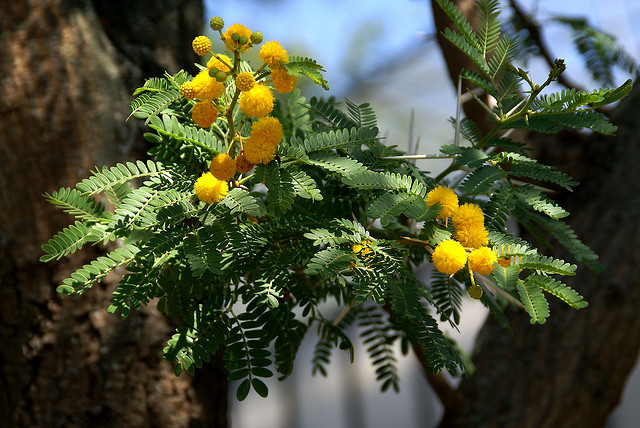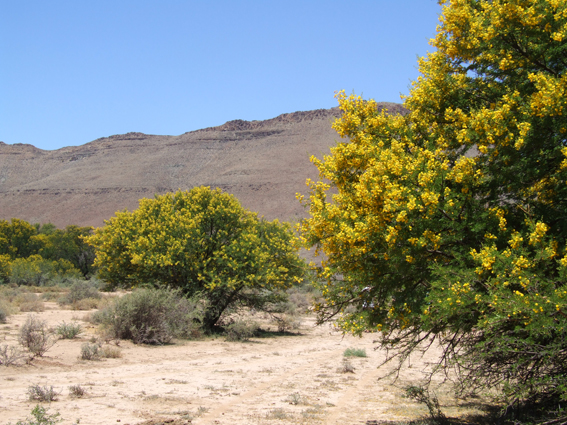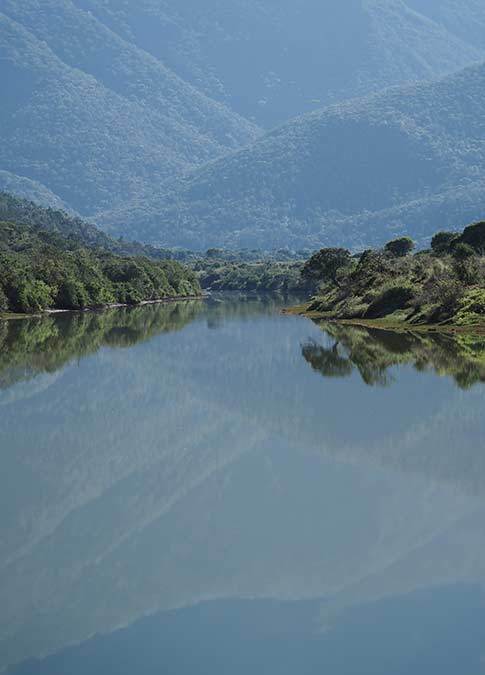South African Christmas Tree
Many years ago, shortly before Christmas, a friend and I were travelling through the arid Karoo. The car developed engine trouble and we stopped at the next small town to have it repaired. Spare parts were ordered from Cape Town and we eventually were forced to spend two nights in the town before we could resume our journey.
The town was situated on one of the main routes from the Highveld to the coast, and our stay coincided with the rush of holiday traffic from the interior. We noticed that the locals cashed in on these fleeting visitors by setting up stalls on the outskirts of the town to sell all manner of local produce ranging from home-made jams and bottled fruit to craftwork, curios and biltong*. My companion suggested that we should turn our enforced stay to good use by setting up our own stall. But what could we offer for sale? Was there any possible gap in the local market? Well, there were no Christmas trees on offer, but this was hardly surprising with the nearest pine or fir trees being hundreds of kilometers away.
The stalls were set-up close to a bridge over the river – dry at this time of year – to which the town owed its existence. It was while sitting in the shade of a tree beside the dry river bed that inspiration came: thorn trees! We were surrounded by hundreds of them and sitting in the shade of one. We would sell genuine, African Christmas trees, sweet-thorn acacias. What could be more appropriate? We might even make enough money to pay for the repairs to the car.

The acacias with their feathery green leaves and fluffy white or yellow flowers are browsed, provide shade and shelter, are notable ‘bird’ trees, are used for fuel, timber and in magic, are hosts to insects, and secrete gum eaten by people, birds and animals. The gum is sufficiently nutritious to keep a person alive for days. As a child I loved it as a natural sweet; the darker the gum the sweeter. In addition they are decorative even when not in flower, with long seed pods and startling white thorns. No other trees are as widespread - being found even at Kariega Reserve - or as important ecologically.

The genus Acacia was first described in 1754 by Philip Miller, acacia being derived from the Greek, akis, meaning a sharp point. There are some 160 species in Africa, 180 in the Americas, 100 in Asia and at least 1000 in Australia. It is a huge and highly diverse group of plants, and in general botanists agreed that it would make more sense to divide them into different genera.
Now the arguments really began. The Australians pointed to the greater number of species to be found in their homeland, and how the official floral emblem of Australia is an acacia. Using this and other arguments they claimed that it made sense for their trees to be Acacias. Those in Africa would have to change to Vachellia and/or Senegalia. The Africans were thunderstruck. Changing the name of the African genera would impact on a far greater proportion of the world’s population. They pointed out too that Australian acacias are more commonly known as wattles, whereas in both Africa and South America acacia is used as a common name.
The arguments were, of course, far more complex than might appear from reading the previous paragraph, but whatever their merits the Australian arguments ultimately carried the day. What were African Acacias are now Vachellias and Senegalias. The Australian plants that have no thorns are now known by a name that indicates that they do have “sharp points”, while the African plants with thorns have lost that name.
However, although the botanical names are now different there is no way in which a change of common name can be enforced, so I will continue to call our thorn trees acacias as I suspect will everyone else, excepting perhaps Australians. So should you happen to mention the word “acacia” when visiting Kariega or any other South African game lodge or reserve, be assured that everyone will know what you are talking about.
Oh yes, and the sale of South African Christmas trees all those years ago? We discovered that the general public was not as yet ready to embrace our idea. (Perhaps Australians will find the same?)
*Biltong – Sun-dried salted strips of boneless meat.









